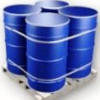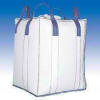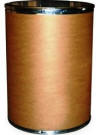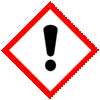| Anmol Chemicals is the pioneer manufacturers of BHT Butylated hydroxytoluene, Pharmaceutical Excipients Chemicals in India. We offer Halal and Kosher BHT Butylated hydroxytoluene made in an ISO9001, ISO22000 (FSSC22000) cGMP and GLP certified facility. Our group has several manufacturing facilities spread across the world, supported by toll manufacturers and representatives in UAE, Europe, Africa, USA, China and has several associated manufacturing facilities spread across India. All the Information on Physics, Chemistry, Applications, Uses and Technology on Manufacture of BHT Butylated hydroxytoluene is in these pages. |
| The units have one or more of the certifications like FDA GMP, ISO 9001, ISO 22000, HACCP, REACH, Kosher & Halal |
Butylated hydroxytoluene BP USP NF FCC Food Grade Manufacturers Exporters - MSDS Seet
Arabic هيدروكسي يانيسول بوتيل هيدروكسي تولين بوتيل
Spanish Butilhidroxianisol Butilhidroxitolueno
Italian Idrossianisolo butilato Idrossitoluene butilato
German Butyliertes Hydroxyanisol Butyliertes Hydroxytoluol
French Hydroxyanisole butylé Hydroxytoluène butylé
Dutch Gebutyleerd hydroxyanisol Gebutyleerd hydroxytolueen
Portuguese Hidroxianisol butilado Hidroxitolueno butilado
Butylated Hydroxyanisole Manufacturers with MSDS
Butylated Hydroxytoluene Manufacturers with MSDS
Apart from Butylated hydroxyanisole and Butylated hydroxytoluene, we also offer Tertetiary or Tert Butylhydroquinone the main antioxidants for oils and fats.
Butylated hydroxytoluene BHT specifications:
Purity: 99.50% min
Appearance: White crystalline or powder
Water content: 0.1% max
Residue on ignition: 0.01% max
Sulfate: 0.002% max.
Heavy metal (as Pb): 0.0004% max.
Arsenic (as As): 0.0001% max
Free phenol: 0.02% max
Moisture: 0.1% max
Lead: 5 mg/Kg max
Mercury: 1 mg/Kg max
Packing will be 25-50kg or 55 lbs. in Double bags or in drums.
BHT Butylated Hydroxytoluene SDS, Safety Data Sheet
1. Product Identification
Synonyms: BHT; 2,6-Di-tertbutyl-p-cresol; 2,6-Bis(1,1-dimethylethyl)-4-methylphenol; 2,6-Di-tert-butyl-1-hydroxy-4-methylbenzene; 2,6-Di-tertbutyl-p-methylphenol; 3,5-Di-tert-butyl-4-hydroxytoluene; 4-Methyl-2,6-di-tert-butylphenol; Butylated hydroxytoluene; Butylhydroxytoluene,
Chemical Name: p-Cresol, 2,6-di-tert-butyl-
CAS No.: 126-37-0 ** 128-37-0
EINECS: EC Number: 204-881-4
Molecular Weight: 220.35
Chemical Formula: C15H24O
Relevant Uses: Industrial use only.
2. Hazards Identification
GHS, Globally Harmonized System Classification in accordance with 29 CFR 1910
Classification according to Regulation (EC) No 1272/2008
Acute toxicity, oral Category 4
Skin corrosion/irritation Category 2
Serious eye damage/eye irritation Category 2A
Specific target organ toxicity, single exposure; Respiratory tract irritation Category 3
Hazardous to the aquatic environment, long-term hazard Category 1
Labeling according to GHS & Regulation (EC) No 1272/2008
| GHS Label Elements 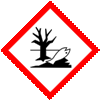 Aquatic Toxicity |
GHS Label Elements |
Signal Words: Warning
Hazard statements:
H302: Harmful if swallowed.
H315: Causes skin irritation.
H319: Causes serious eye irritation.
H335: May cause respiratory irritation.
H410: Very Toxic to aquatic life with long lasting effects.
Precautionary statements:
P260: Do not breathe dust/fume/gas/mist/vapors/spray.
P262: Do not get in eyes, on skin, or on clothing.
P264 Wash thoroughly after handling.
P270: Do not eat, drink or smoke when using this product.
P273: Avoid release to the environment.
P280: Wear protective gloves/protective clothing/eye protection/face protection.
P314: Get medical advice/attention if you feel unwell.
P330: Rinse mouth.
P301+P312: IF SWALLOWED: Call a POISON CENTER or doctor/ physician if you feel unwell.
P302+P352: IF ON SKIN: Wash with plenty of soap and water.
P305+P351+P338: IF IN EYES: Rinse cautiously with water for several minutes. Remove contact lenses, if present and easy to do. Continue rinsing.
P362: Take off contaminated clothing and wash before reuse.
P332+P313: If skin irritation occurs: Get medical advice/attention.
P337+P313: If eye irritation persists: Get medical advice/ attention.
P391: Collect spillage.
P405: Store locked up.
P501: Dispose of contents/container in accordance with local/regional/national/international regulation.
Classification according to EU Directives 67/548/EEC or 1999/45/EC:
Xi Irritant, Xn Harmful, N Dangerous for the environment
R22 - Harmful if swallowed
R40 - Limited evidence of a carcinogenic effect
R36/37/38 - Irritating to eyes, respiratory system and skin
R50/53 - Very toxic to aquatic organisms, may cause long-term adverse effects in the aquatic environment.
For the full text of the H-statements and R-phrases mentioned in this Section, see Section 16.
OSHA Hazards: Irritant. Hazardous by definition of Hazard Communication Standard (29 CFR 1910.1200).
HMIS (Perceived): Health hazard: 2, Flammability: 1, Reactivity: 0, Personal Protection: E
NFPA (Perceived): Health hazard: 0, Fire: 1, Reactivity Hazard: 0, Protective Equip: Goggles, Lab Coat.
3. Composition/Information on Ingredients
Ingredient: Butylated Hydroxytoluene, BHT
CAS No.: 126-37-0
Percent: 97 - 100%
4. First Aid Measures
Always seek medical attention after first aid measures are provided.
Inhalation: Remove to fresh air. If not breathing, give artificial respiration. If breathing is difficult, give oxygen. Get medical attention.
Ingestion: Never give anything by mouth to an unconscious person. Get medical attention.
Skin Contact: Wipe off excess material from skin then immediately flush skin with plenty of water for at least 15 minutes. Remove contaminated clothing and shoes. Get medical attention. Wash clothing before reuse. Thoroughly clean shoes before reuse.
Eye Contact: Immediately flush eyes with plenty of water for at least 15 minutes, lifting lower and upper eyelids occasionally. Get medical attention immediately.
5. Fire Fighting Measures
Flammability of the Product: May be combustible at high temperature..
Auto-Ignition Temperature: 470C (878F).
Flash Points: CLOSED CUP: 118.3C (244.9F).
Products of Combustion: Carbon dioxide, Carbon monoxide, fumes.
Fire: Flammable in the presence of open flame.
Explosion: Slightly explosive in presence of heat.
Fire Extinguishing Media: Use any means suitable for extinguishing surrounding fire. Use water spray, alcohol-resistant foam, dry chemical or carbon dioxide.
Special Information: In the event of a fire, wear full protective clothing and NIOSH-approved self-contained breathing apparatus with full face piece operated in the pressure demand or other positive pressure mode. At high temperatures or when moistened under fire conditions, it may produce toxic or irritating fumes. On decomposition it may emit hydrogen chloride. Containers may explode on heating
6. Accidental Release Measures
Small Spill: Avoid dust formation. Avoid breathing dust. Ensure adequate ventilation. Use appropriate tools to put the spilled solid in a convenient waste disposal container. Finish cleaning by spreading water on the contaminated surface and dispose of according to local and regional authority requirements.
Large Spill: Avoid touching the spilled material. Do not let the product enter drains. Use a shovel to put the material into a convenient waste disposal container. Do not contaminate the environment.
7. Handling and Storage
Do not ingest. Do not breathe dust. Wear suitable protective clothing. In case of insufficient ventilation, wear suitable respiratory equipment.
Avoid contact with skin and eyes. Avoid formation of dust and aerosols. Wash hands thoroughly after handling. Provide appropriate exhaust ventilation at places where dust is formed. If you feel unwell, seek medical attention.
Keep in a tightly closed container, stored in a cool, dry, ventilated area. Protect against physical damage.
8. Exposure Controls/Personal Protection
Airborne Exposure Limits: Although upto 1omg/m3 is prescribed in some regulations, limit it to 2mg/m3.
Ventilation System: A system of local and/or general exhaust is recommended to keep employee exposures as low as possible. Local exhaust ventilation is generally preferred because it can control the emissions of the contaminant at its source, preventing dispersion of it into the general work area.
Personal Respirators (NIOSH Approved): For conditions of use where exposure to dust or mist is apparent and engineering controls are not feasible, a particulate respirator may be worn. For emergencies or instances where the exposure levels are not known, use a full-face positive-pressure, air-supplied respirator.
Skin Protection: Wear protective gloves and clean body-covering clothing.
Eye Protection: Use chemical safety goggles and/or full face shield where dusting or splashing of solutions is possible. Maintain eye wash fountain and quick-drench facilities in work area.
Other Control Measures: Maintain good housekeeping in work area. Handle in accordance with good industrial hygiene and safety practice. Wash hands after handling.
9. Physical and Chemical Properties
Appearance: White solid.
Odor: It has faint typical odor.
Solubility: It is slightly soluble in water.
pH: NA
Density: 1.03 - 1.05 g/mL at 20C (68F)
Molecular Weight: 220.2
Molecular Formula: C15H24O
% Volatiles by volume @ 21C (70F): -
Boiling Point: 265C, 509F
Melting Point: 70 C, 158F
10. Stability and Reactivity
Stability: Butylated Hydroxytoluene, BHT is stable under ordinary conditions of use and storage.
Hazardous Decomposition Products: It emits Carbon dioxide, Carbon monoxide & Fumes.
Hazardous Polymerization: Will not occur.
Incompatibilities: Strong oxidizing agents, reducing agents metals and acids.
Conditions to Avoid: Incompatibles and moisture.
Phenols are incompatible with strong reducing substances such as hydrides, nitrides, alkali metals, and sulfides.
Avoid use of aluminum, copper and brass alloys in storage and process equipment.
Heat is generated by the acid-base reaction between phenols and bases.
Phenols are sulfonated very readily (for example, by concentrated sulfuric acid at room temperature), these reactions generate heat.
Phenols are nitrated very rapidly, even by dilute nitric acid.
Nitrated phenols often explode when heated. Many of them form metal salts that tend toward detonation by rather mild shock.
Segregate from oleum, nitric acid and chlorosulfonic acid.
11. Toxicological Information
Toxicity data
ORL-RAT LD50 890 mg kg-1
ORL-MAM LD50 650 mg kg-1
Carcinogenic Effects: Not know as carcinogen.
Mutagenic Effects: Mutagenic for bacteria and/or yeast. Mutagenic for mammalian somatic cells. May cause damage to the following organs: blood, liver, central nervous system (CNS).
Teratogenic Effects: May cause adverse reproductive effects and birth defects.
Developmental Toxicity: Adverse reproductive effects have occurred in experimental animals.
12. Ecological Information
Toxicity to fish: LC50 - Oryzias latipes - 5,3 mg/l - 48 h
Toxicity to daphnia and other aquatic invertebrates: static test EC50 - Daphnia magna (Water flea) - 0,48 mg/l - 48 h
Toxicity to bacteria: Growth inhibition EC50 - Protozoa - 1,7 mg/l - 24 h
Environmental Fate: Not available.
Environmental Toxicity: Not known. Low aquatic toxicity is expected.
BOD5 and COD: Not available.
Products of Biodegradation: Possibly hazardous short term degradation products are not likely. However, long term degradation products may arise.
Toxicity of the Products of Biodegradation: The products of degradation are less toxic than the product itself.
13. Disposal Considerations
Whatever cannot be saved for recovery or recycling should be managed in an appropriate and approved waste disposal facility. Processing, use or contamination of this product may change the waste management options. State and local disposal regulations may differ from federal disposal regulations. Dispose of container and unused contents in accordance with federal, state and local requirements.
14. Transport Information
USA DOT & ADR/RID Classification:
UN number: 3077
UN proper shipping name: ENVIRONMENTALLY HAZARDOUS SUBSTANCE, SOLID, N.O.S. (2,6-di-tert-Butyl-p-cresol)
Transport hazard class(es): 9
Packaging group: III
Canada TDG Classification:
UN number: 3077
UN proper shipping name: ENVIRONMENTALLY HAZARDOUS SUBSTANCE, SOLID, N.O.S. (2,6-di-tert-Butyl-p-cresol)
Transport hazard class(es): 9
Packaging group: III
IMDG & IATA
UN number: 3077
UN proper shipping name: ENVIRONMENTALLY HAZARDOUS SUBSTANCE, SOLID, N.O.S. (2,6-di-tert-Butyl-p-cresol)
Transport hazard class(es): 9
Packaging group: III
15. Regulatory Information
USA:
OSHA Hazards: Irritant. Hazardous by definition of Hazard Communication Standard (29 CFR 1910.1200).
SARA 302 Components : No chemicals in this material are subject to the reporting requirements of SARA Title III, Section 302.
SARA 313 Components : No chemicals are reportable under Section 313.
SARA 311/312 Hazards
Component CAS # 126-37-0.
Fire Hazard: No; Reactivity Hazard: No; Pressure Hazard: No; Immediate Health Hazard: Acute
Chronic Health Hazard: No
Massachusetts Right To Know Components: Listed
Pennsylvania Right To Know Components: Listed
New Jersey Right To Know Components: Listed
California prop. 65:Contains no chemical subject to California Prop 65.
Clean Air Act:
This material does not contain any hazardous air pollutants.
This material does not contain any Class 1 Ozone depletors.
This material does not contain any Class 2 Ozone depletors.
Clean Water Act:
None of the chemicals in this product are listed as Hazardous Substances under the CWA.
None of the chemicals in this product are listed as Priority Pollutants under the CWA.
None of the chemicals in this product are listed as Toxic Pollutants under the CWA.
WGK (Water Danger/Protection): CAS# 128-37-0: 1.
Canada - DSL/NDSL: CAS# 128-37-0: 1is listed on Canada's DSL List.
Canada - WHMIS : CLASS D2B, D-2A:
Canadian Ingredient Disclosure List: CAS# 25013-16-5 is listed on the Canadian Ingredient Disclosure List.
DSCL (EEC): R22- Harmful if swallowed. R36/37/38- Irritating to eyes respiratory system and skin. S26- In case of contact with eyes, rinse immediately with plenty of water and seek medical advice. S37/39- Wear suitable gloves and eye/face protection.
Australian Hazchem Code: -
Poison Schedule: -
16. Other Information
EINECS: EC Number: 204-881-4
H302 = Harmful if swallowed.
H315 = Causes skin irritation.
H319 = Causes serious eye irritation.
H335 = May cause respiratory irritation.
H410 = Very Toxic to aquatic life with long lasting effects.
Xi = Irritant
Xn = Harmful
N = Dangerous for the environment
R22 = Harmful if swallowed
R36/37/38 = Irritating to eyes, respiratory system and skin
R50/53 = Very toxic to aquatic organisms, may cause long-term adverse effects in the aquatic environment.
Disclaimer:
***********************************
Our company provides this BHT Butylated Hydroxytoluene SDS sheet in good faith but makes no representation as to its comprehensiveness or accuracy. This
MSDS sheet is intended only as a guide to the appropriate precautionary handling of the material by a properly trained person using this
product. The above information has been compiled from various sources and has the possibility of discrepancy and being out-dated information. Individuals receiving the
information must exercise their independent judgment and do further search in determining its appropriateness for a particular purpose. In no case shall our company be
liable to loss or damages by the product user.
***********************************
BHT Butylated hydroxytoluene manufacturers
Anmol Chemicals
S-8, SARIFA MANSION, 2ND FLANK ROAD, CHINCHBUNDER, MUMBAI 400009, INDIA
TEL: (OFFICE) 91-22-23770100, 23726950, 23774610, 23723564. FAX: 91-22-23728264
e-mail: anmolc@mtnl.net.in

Alpha Beta Gamma methyl ionone -- Benzyl acetate -- Benzyl benzoate -- Benzyl salicylate -- BHA Butylated hydroxyanisole & BHT Butylated hydroxytoluene -- Cinnamaldehyde Cinnamic aldehyde -- Ethyl naphthyl ether or Nerolin bromelia -- Ethyl chloroacetate -- HEDP Hhydroxyethylidenediphosphonic acid -- Isatoic anhydride -- Maleic acid -- Manzanate; Ethyl 2 Methyl Pentanoate or Valerate -- Methyl salicylate -- Phenyl ethyl propionate Phenyl ethyl acetate -- Sodium formaldehyde bisulfite -- TBHQ Tert or Tertiary butylhydroquinone -- Dimethyl anthranilate -- Geranyl nitrile -- Styrallyl acetate
Exports to USA, Canada, UAE, Dubai, South Africa, Tanzania, Kenya, Nigeria, Egypt, Uganda, Turkey, Mexico, Brazil, Chile, Argentina, Europe Netherlands, Italy, Spain, Germany, Portugal, France, Malaysia, Indonesia, Thailand, Vietnam, Korea, Japan, etc.
Copyright and Usual Disclaimer is Applicable. 12 January, 2022


